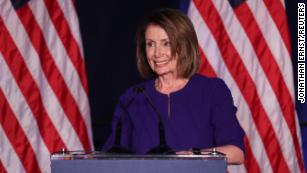Pelosi was nominated as speaker by House Democrats in a closed door meeting by a 203-32 vote, according to attendees in the room. Three ballots were blank. One member was absent.
To be elected House speaker requires support from a majority of all members who are present and voting, a threshold that could be as high as 218 votes, though Pelosi could win with fewer as several previous House speakers have done, if members vote present or decline to participate.
A small, but vocal, faction of Democrats have been attempting to derail Pelosi’s run for speaker, but she has succeeded in winning over a number of critics in recent days and was expected to easily win the nomination since it required only a majority of House Democrats. The make-or-break moment for Pelosi isn’t expected to come until January, when the full House holds a final floor vote to elect the speaker.
In 2016, Pelosi lost 63 votes in the House Democratic Caucus when she ran for Democratic leader against Tim Ryan. Ultimately, however, just four voted against her on the floor in 2017.
Pelosi and her allies have been working to make deals with some of her critics and win over detractors, and have several more weeks to continue doing so to shore up support before the January vote.
As the leader of House Democrats, Pelosi has a variety of ways she can attempt to flip Democrats. To name just a few: She can make promises to prioritize legislative priorities in the new Congress. She can help members secure coveted positions on powerful committees. She can broker connections with prominent Democrats or offer to assist with fundraising efforts.













